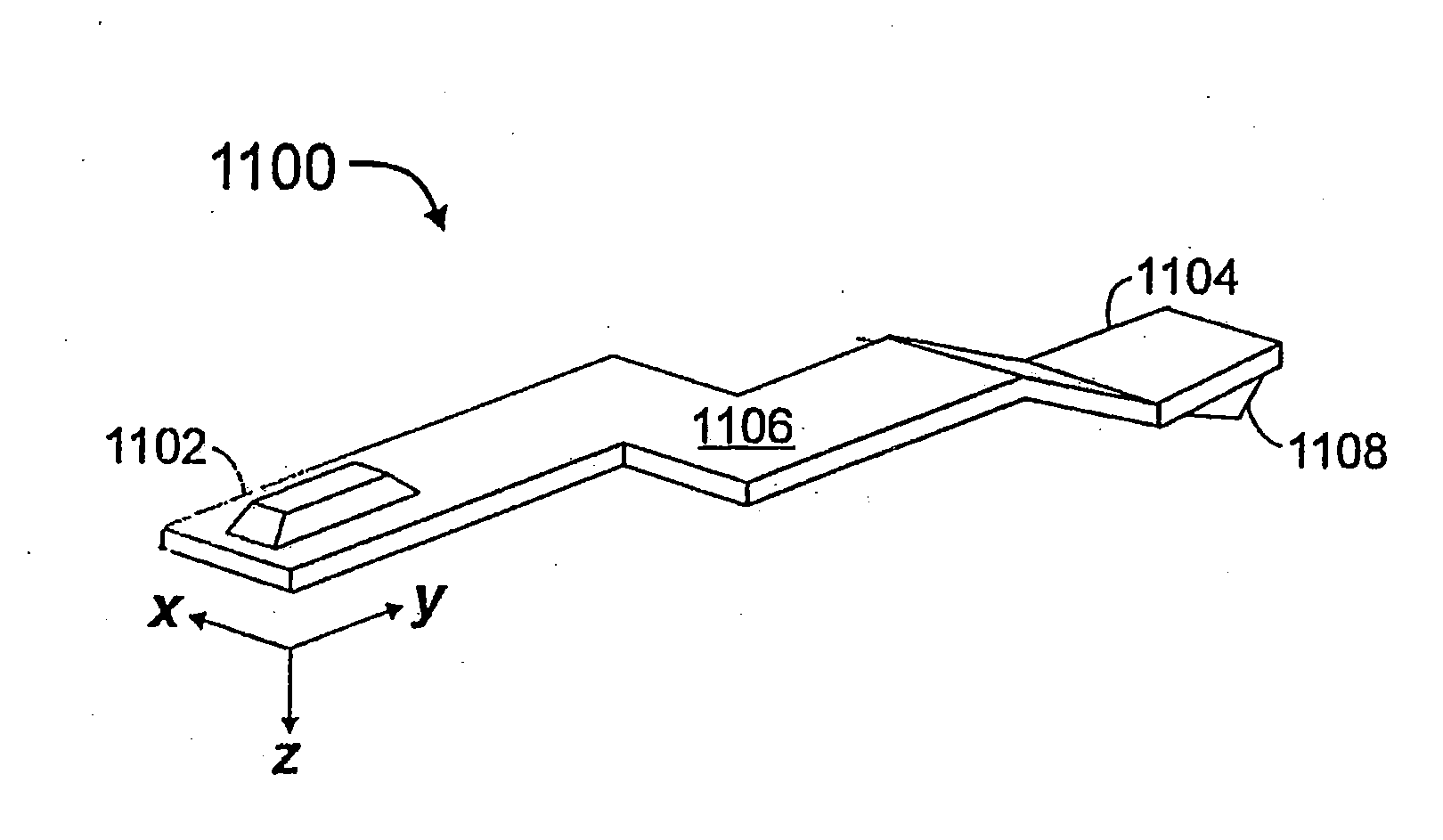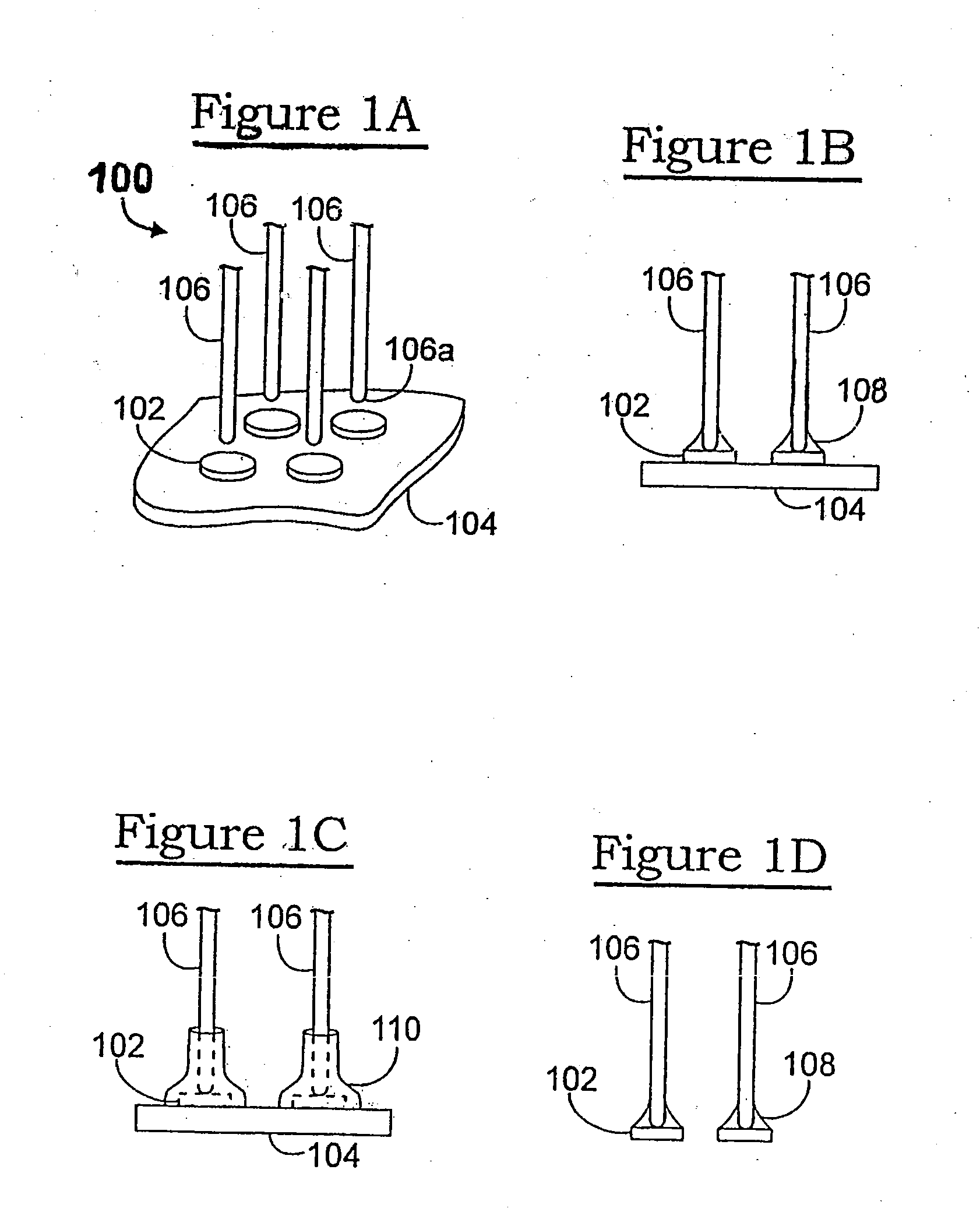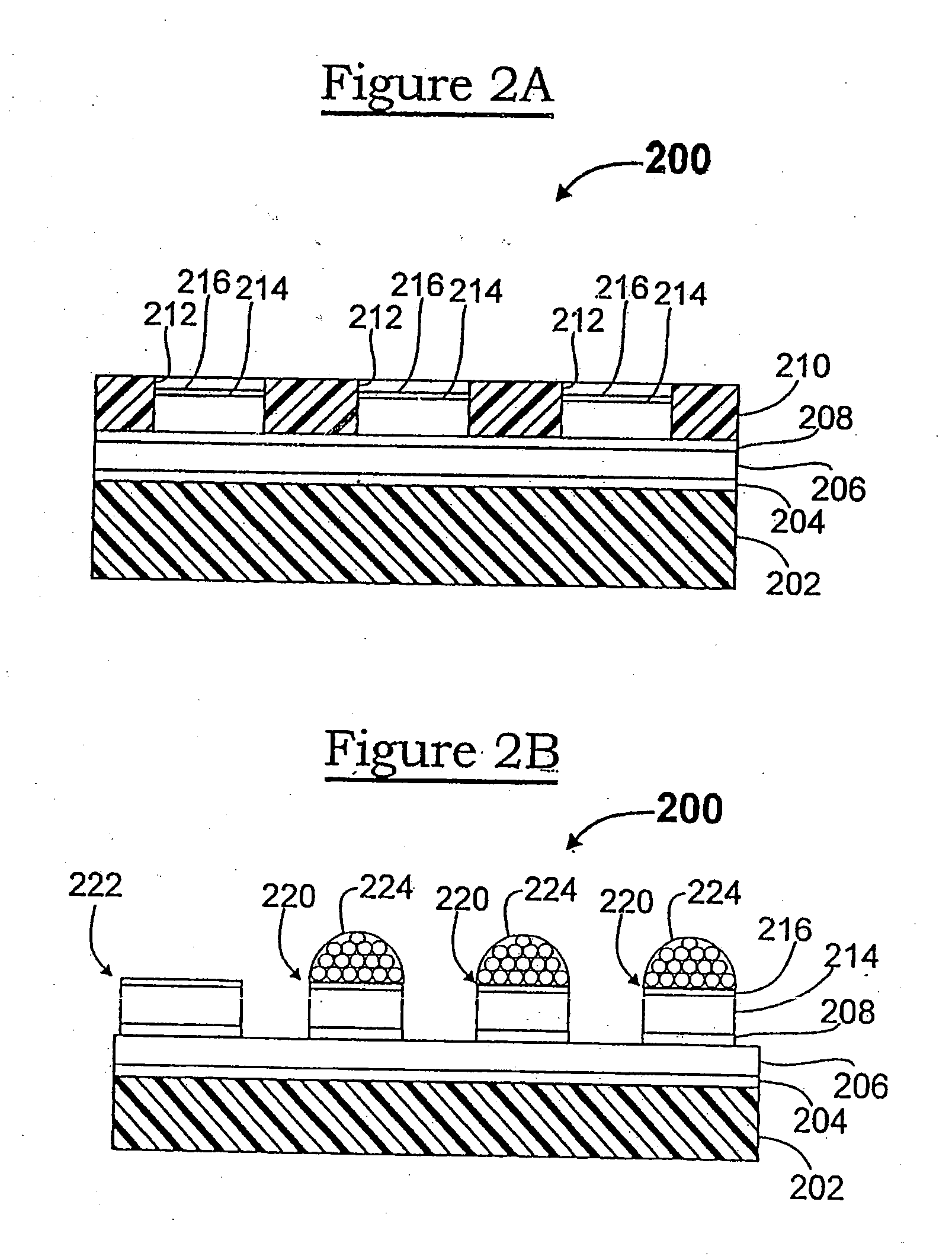Contact tip structure for microelectronic interconnection elements and methods of making same
a technology of interconnection elements and contact tips, which is applied in the direction of individual semiconductor device testing, instruments, solid-state devices, etc., can solve the problems of increasing the difficulty of grinding the tip, increasing the difficulty of controlling or establishing the desired shape at the contact end, and requiring frequent rework. to achieve the effect of precise uniformity
- Summary
- Abstract
- Description
- Claims
- Application Information
AI Technical Summary
Benefits of technology
Problems solved by technology
Method used
Image
Examples
example 1
[0111] An example of a plurality of elongate interconnection elements which are not mounted by their ends to a substrate is the IBM™ Cobra™ probe which, as shown (stylized) in FIG. 3A, has a plurality (four of many shown) of elongate interconnection elements 302 extending generally parallel to each other between two rigid fixed planar structures 304 and 306, the two opposite ends of each interconnection element 302 being exposed through a respective one of the two rigid fixed planar structures for making a pressure connection between a terminal (not shown) of a one electronic component (not shown) and a terminal (not shown) of another electronic component (not shown). The illustration of FIG. 3A is schematic in nature, and is not intended to be a mechanical assembly drawing. The elongate interconnection elements 302 can be kinked, and generally function as buckling beams.
[0112] Prefabricated contact tip structures, for example the tip structures 220 shown in FIG. 2B hereinabove, ar...
example 2
[0115]FIG. 3B illustrates a one of a plurality of contact tip structures 220 joined (such as by brazing or plating, discussed hereinabove, not shown) to an end of an elongate tungsten needle 312 which is a typical element of a prior art probe card (not shown).
[0116] This illustrates, in an exemplary manner, an important advantage of the present invention. It is generally difficult to provide existing tungsten needles of probe cards with a desired tip shape, especially as the needles are getting smaller and smaller in size (e.g., having a diameter of 1 mil). By joining prefabricated contact tip structures (220) to the ends of tungsten needles (312), these problems may be avoided, thereby facilitating the use of ever smaller (e.g., in diameter) tungsten needles while providing contact surfaces (i.e., of the contact tip structures) which are larger (in diameter, or “footprint”) than the tungsten needles. The present invention also overcomes, for example, the difficulty in controlling ...
example 3
[0119] The interconnection elements to which the contact tip structures are joined will often be elongate, and may be inherently resilient, such as in the previous two examples. It is, however, within the scope of the present invention that the interconnection elements to which the contact tip structures are joined are neither elongate nor inherently resilient.
[0120]FIG. 3C illustrates a portion of a membrane probe of the type known in the prior art wherein a plurality (two of many shown) of non-resilient bump interconnection elements (contact bumps) 322 are resident on a surface of a flexible membrane 324. As illustrated, the contact tip structures of the present invention, for example the tip structures 220 are joined (such as by brazing or plating, discussed hereinabove, not shown) to the interconnection elements 322. For purposes of this discussion, the rounded bumps 322 are considered to have “tips” or “ends” at their apex (their top edge, as viewed).
[0121] The ability to joi...
PUM
 Login to View More
Login to View More Abstract
Description
Claims
Application Information
 Login to View More
Login to View More - R&D
- Intellectual Property
- Life Sciences
- Materials
- Tech Scout
- Unparalleled Data Quality
- Higher Quality Content
- 60% Fewer Hallucinations
Browse by: Latest US Patents, China's latest patents, Technical Efficacy Thesaurus, Application Domain, Technology Topic, Popular Technical Reports.
© 2025 PatSnap. All rights reserved.Legal|Privacy policy|Modern Slavery Act Transparency Statement|Sitemap|About US| Contact US: help@patsnap.com



